Understanding the differences between drip coffee vs pour over is essential for making the perfect cup of freshly brewed coffee that gets you up every morning and ready to take on the world. Both types have pros and cons, so which one is the best coffee for you?
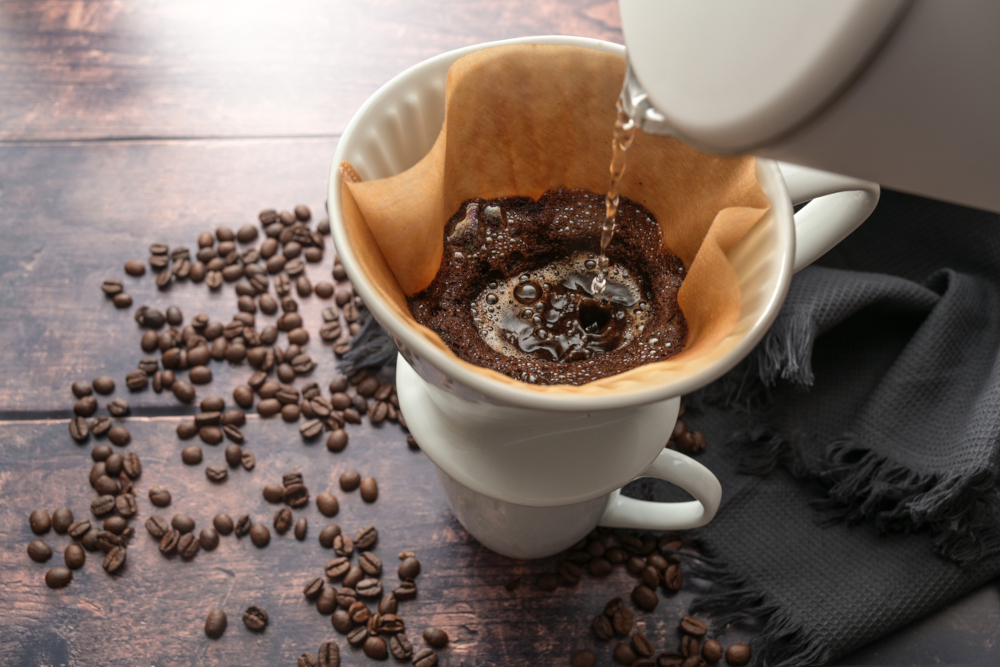
Table of Contents
- Drip Coffee vs Pour Over: Everything You Need to Know
- How to Make Pour Over Coffee in 10 Easy Steps
- FAQ
- Conclusion
Drip-brew coffee and pour-over coffee are the perfect morning pick-me-up to start your day the right way, delivering a bold and flavorful cup of joe every time. But we can certainly understand why some people like one over the other since the coffee type is a matter of personal preference.
You will too.
| Drip-Brewing Coffee | Pour-Over Coffee | |
|---|---|---|
| Flavor quality | Mostly depends on the brewing machine | Flavorful and rich |
| Brewing control | Very little control, but everything is automated | Complete control over all brewing parameters |
| Brewing time | Fast and perfect when you need large amounts of coffee | Longer brewing time to improve quality |
| Required supplies | Coffee machine, paper filter, ground coffee, and water | Whole coffee beans of your choice, coffee machine, a measuring scale, a coffee grinder, filtered water, paper filters, and a water kettle |
| Ease of use | Very beginner-friendly | Requires a lot of coffee-making experience |
| Price | As low as $20 | $200 or more |
Drip Coffee vs Pour Over: Everything You Need to Know
Before learning the most important differences between drip coffee vs pour over to make coffee, let’s find out what each coffee type involves.
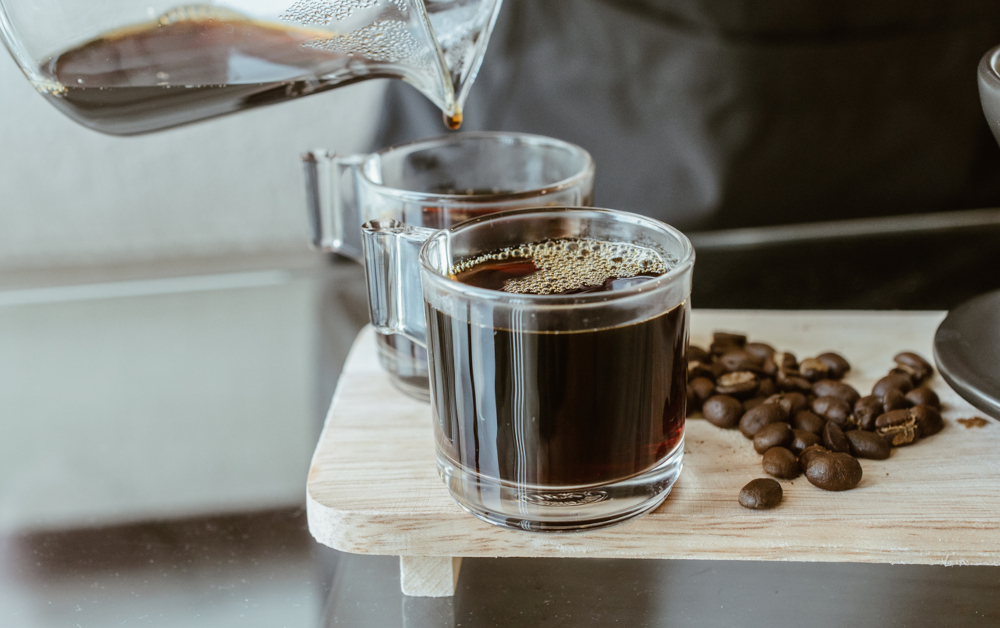
What Is Pour Over Coffee?
Pour over coffee brewing is possible by pouring hot water over ground coffee beans placed in a filter – the water filters through the grounds and into a cup or carafe.
This type of brewing produces a clean, smooth cup of coffee with low acidity.
Pour-over coffee is known for its delicate flavors and aromas, making it a popular choice among coffee enthusiasts. It takes a bit of time to brew a cup of pour-over coffee, but the results are worth it.
What Is Drip Coffee?
Drip coffee is a type of coffee brewed by passing hot water through ground coffee beans held in a filter. It’s brewed by gravity and passes through the coffee bed slowly, allowing it to extract all the flavor from the beans.
Drip-brew coffee is known for its rich flavor and strong aroma. It’s a must-have for people who like their coffee on the bold side.
Besides, it’s quick and easy to make, and it’s an excellent choice for busy mornings when you must absolutely be on top of your game for work. You might also be interested in learning more about the differences between drip coffee and Americano.
Pour Over Coffee vs Drip – Key Differences
So, which is better when it comes to drip coffee vs pour over?
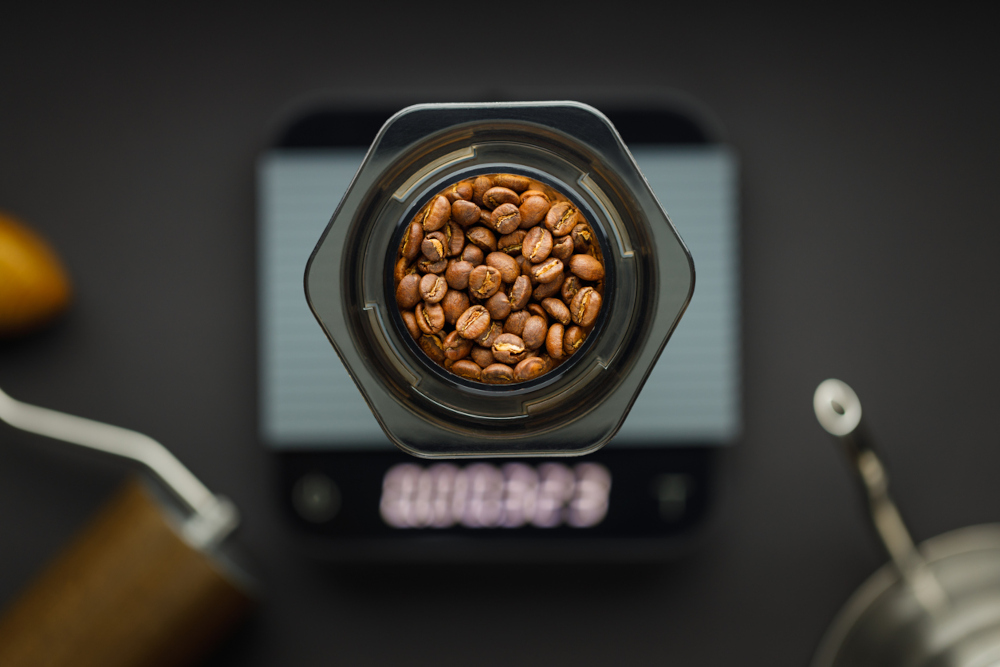
We figured that the best way to help you decide which coffee-making method is perfect for you is to discuss the most important aspects in great detail. Then you can determine which ones are a priority for you.
Flavor Quality
When it comes to flavor quality, pour-over coffee takes the cake. It has a clean, smooth flavor with low acidity for coffee lovers.
Regular drip coffee is known for its bold, rich flavor. Still, it can also be quite acidic, so if you’re looking for a tasty cup of delicious coffee that isn’t very tangy, then pour over is one way to go.
Brewing Control
Pour-over coffee gives you more control over the brewing process, so you can ensure that your coffee is just the way you like it.
This is mainly because this brewing method allows you to control four fundamental parameters that contribute to the flavor and the quality of your coffee:
- Coffee/Water ratio – The coffee-to-water ratio is vital since it allows you to adjust the caffeine strength. But it can also affect the aroma’s intensity, and this is something you can customize to your liking.
- Amount of coffee – This is somewhat related to the coffee-to-water ratio since controlling the amount of coffee you plan on making is just as important as the quality of the resulting coffee.
- Water temperature – All electric coffee makers have a standard temperature range for water boiling. Still, if you’re going with pour-over coffee, this is something that you’ll need to monitor yourself.
- Pour speed – The amount of time the water spends in contact with the coffee beans is crucial. If you pour it too fast, the coffee will be too watery. But it may be too strong or even bitter if you pour it too slow.
Drip-brew coffee is known for its strong flavor and aroma, but that can also be a drawback. It’s difficult to control the caffeine strength when using an electric drip coffee maker since everything is done according to the machine’s default settings.
If you prefer strong coffee, you should find out more about drip and percolator coffee differences.
Brewing Time
Pour-over coffee takes a bit longer to brew than using the drip coffee method – about 3-5 minutes compared to 2-3 minutes.
However, the results are worth the wait. Drip coffee brewing is ready in a hurry, but it can often taste burnt or bitter if you don’t let the coffee brew for the right amount of time.
Required Supplies
Drip-brewing coffee and pour-over coffee require standard equipment, but you may already have everything you need.
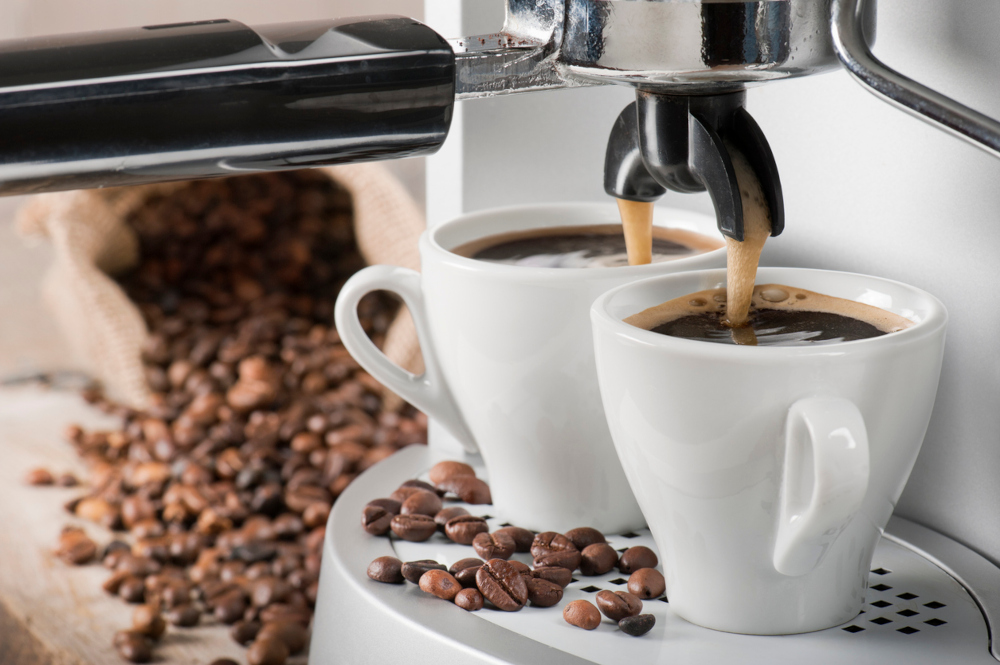
Drip-brewing coffee only requires an electric drip coffee maker and ground coffee. Pour-over coffee requires a coffee maker, grinder, filter, and hot water.
Ease of Use
When comparing drip coffee vs pour over, you should know that, although both are easy to use, drip-brewing coffee is simpler to make – all you need is a coffee maker and the best ground coffee you can find.
Pour-over coffee requires a bit more effort since you need to prepare a coffee maker, grinder, filter, and hot water. But the coffee brewing process is elementary, so you shouldn’t stumble upon any problems there.
Price
When it comes to drip coffee vs pour over, both are affordable. You can buy auto drip coffee makers for as little as $20, and filters are cheap.
Speaking of which, if you’re on the market to buy one for yourself, check out one of our buying guides for the best drip coffee machines.
Pour over coffee requires a bit more investment, but the results are worth it for coffee lovers. You can buy a good pour over coffee maker for around $200.
The Pros of Pour-Over Coffee
Because of the brewing method that requires more involvement from the user, pour-over coffee is often seen as a more artisanal and higher quality product.
Many factors come into play when making a great cup of pour-over coffee, such as the grind size, water temperature, and pouring technique. All of these make it an interesting and rewarding brewing process to master.
As such, this brewing method is perfect for people who:
- Generally, look for quality over quantity.
- Aren’t under any kind of time constraints.
- Are looking for a higher quality, artisanal coffee experience.
- Find the automated presets of a drip coffee maker to be limiting.
- Enjoy experimenting with different variables to create the perfect cup of coffee.
The Pros of Drip Coffee
Those who prefer drip coffee are usually consumers looking for convenience and consistency.
Drip coffee makers are typically very easy to use. Most of them have automatic brewing presets that make it simple to get a good cup of coffee without any fuss.
As such, this brewing method is perfect for people who:
- Drink lots of coffee during the day
- Lack time to brew the coffee using more manual approaches
- Drink coffee out of convenience and just need to get their daily caffeine fix
- Don’t have the budget to buy something more expensive like an espresso machine (find our more about the espresso and drip coffee differences)
- Like the convenience of a machine that can be programmed to have the coffee brewed first thing in the morning
How to Make Pour Over Coffee in 10 Easy Steps
Controlling electric drip coffee makers is pretty straightforward. All you need to do is fill the reservoir with water, place a filter, add the ground coffee and press a button to start the coffee brewing.
On the other hand, making a good pour over coffee is a lot more complex than just ordering a drip coffee maker to prepare everything for you using a filter and coffee grounds. This next section will show you how you can create the perfect cup.
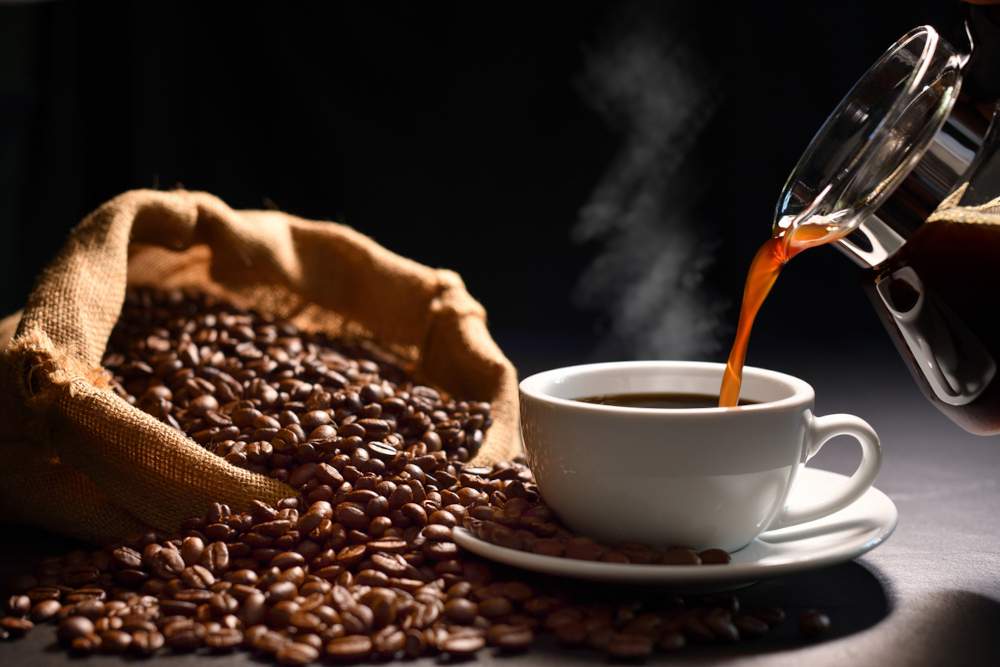
- For starters, make sure you have all the required supplies:
- Whole coffee beans of your choice
- Pour over coffee maker
- A measuring scale
- A coffee grinder
- Filtered water
- Paper filters
- Gooseneck kettle
- Then, use the measuring scale to weigh 32 grams of fresh coffee beans.
- Use the gooseneck kettle to heat 600 ml of filtered water.
- Next, use the coffee grinder to grind the beans to your desired consistency.
- Place the paper filter in the pour over coffee maker and pour water in a circular motion until saturation.
- Throw away any excess water left in the kettle until you have only 500 ml left.
- Add the coffee grounds on top of the filter and shake the coffee maker so that the grounds settle.
- Add a bit of water to allow the coffee to bloom.
- Blooming is when the coffee grounds start rising due to the release of gas.
- As soon as it stops blooming, pour the remaining water over the coffee grounds.
- Make sure to pour it slowly to provide sufficient contact with the ground coffee.
- Use circular motions so that the water comes in contact with the entire coffee in the filter.
- Water flow is important. As a rule of thumb, pour water slowly enough to last several minutes (about 3).
- Remove the filter and enjoy your coffee!
Pour Over vs Drip Coffee (FAQ)
While we explained the differences between drip and pour over coffee, a few lingering questions may be left. Here are more details you should know about these two coffee brewing methods.
Is drip coffee the same as pour over?
No, drip-brewed coffee is not the same as pour over coffee. It’s done by pouring water over coffee grounds in a filter. In contrast, pour over coffee is done by manually pouring water over coffee grounds.
How do you make drip coffee?
Making drip-brewed coffee is easy using a drip coffee maker and ground coffee. Just fill the reservoir with water, place a filter, add the ground coffee and press a button to start brewing coffee.
Can you use regular coffee for pour over?
Yes, you can use regular coffee for pour over. But we recommend using whole coffee beans and grinding them yourself; this will give you the best results.
Is drip coffee better than Keurig?
Besides the convenience of using pods, Keurig coffee brewers don’t produce the same quality of coffee as drip coffee makers. Plus, a drip coffee maker tends to make richer and fuller-bodied cups of coffee.
What is the difference between French press and drip coffee?
There are many differences between French press and drip coffee when it comes to brewing time, flavor quality, caffeine content, and other aspects.
Drip Coffee vs Pour Over – Conclusion
So, which is better for coffee connoisseurs when it comes to drip coffee vs pour over?
There’s no correct answer since it depends on what you’re looking for. If you want a smooth, low-acid cup of coffee with delicate flavors and aromas, then pour over is the way to go.
On the other hand, if you’re looking for a strong, bold cup of coffee with more flavor and high acidity, then drip-brewed coffee is the better choice.
Drip coffee machines are also a better option for large gatherings or busy mornings, while pour over coffee is perfect to brew coffee one step at a time.
32 gram of coffee beans for 500 ml of coffee? Get serious….